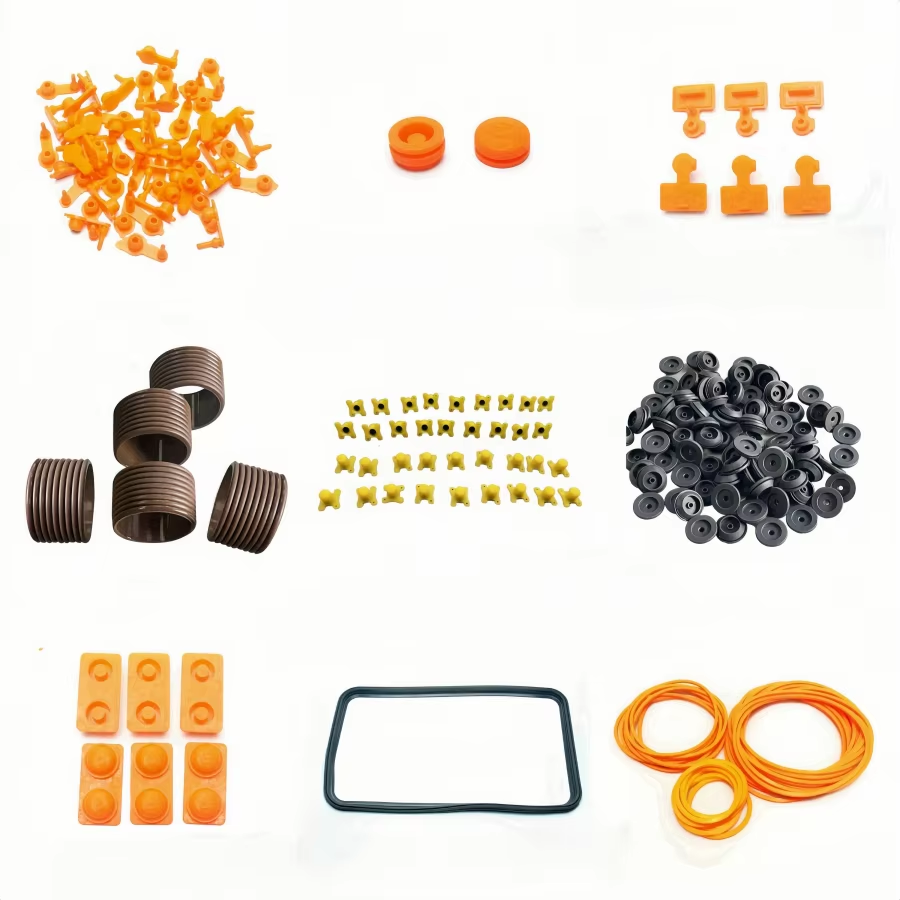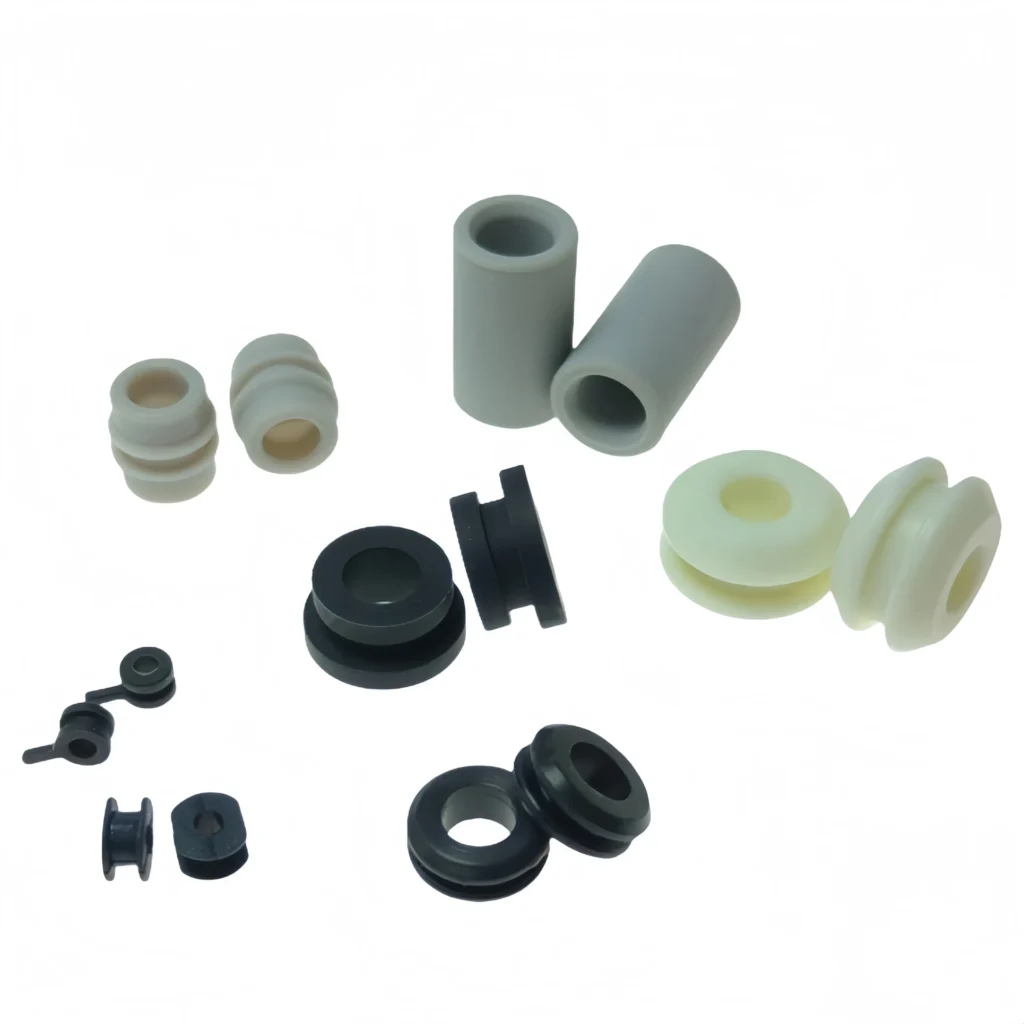- April 30, 2025
- Posted by: feinuojixie
- Category: Injection Molding News


In today’s fast-paced manufacturing landscape, efficiency and scalability are everything. Large part injection molding has emerged as a critical solution for industries that require robust, high-performance components—often produced in high volumes with consistent precision. Whether it’s a vehicle dashboard, a storage bin, or a structural appliance housing, the ability to mold large parts in a single cycle dramatically reduces assembly time, ensures dimensional accuracy, and lowers overall production cost. As companies push for smarter, faster, and more sustainable production strategies, understanding how large part injection molding works from prototype to final run can be the key to staying competitive.

Understanding the Basics of Large Part Injection Molding
Large part injection molding is the process of producing oversized plastic components by injecting molten resin into a specially designed mold. Unlike standard injection molding, it requires significantly more clamping force, larger machinery, and carefully engineered tooling to accommodate high volumes of material. This method is ideal for manufacturing parts that are too large or too complex to be assembled from multiple smaller pieces. Industries such as agriculture, construction, and automotive depend on this technique for producing durable parts like bumpers, enclosures, and panels. The fundamentals involve heating plastic resin, injecting it into a mold, cooling it, and then ejecting the finished part—scaled up for size and complexity.
From Concept to CAD: Turning Ideas into Digital Designs
Before any physical part is made, the journey begins with design. Engineers use CAD software to create detailed digital models of the intended part. These 3D models include every specification—dimensions, wall thickness, draft angles, and material flow analysis—to ensure the design is both functional and moldable. Simulation tools can also be used to run virtual injection molding tests, which predict how the resin will flow through the mold, where potential air traps or weld lines might form, and how the part will cool. These insights allow engineers to refine their designs early, reducing costly revisions later in the process.
Prototyping with Precision: Why It Matters in Large Part Injection Molding
Prototyping is a critical step in validating both form and function. For large part injection molding, this often means creating scaled-down models or single-cavity test molds to examine the part’s real-world performance. This phase helps uncover design flaws, evaluate strength and durability, and confirm assembly compatibility. Rapid prototyping methods like 3D printing can be used for quick iterations, while CNC-machined molds offer more accurate representations of how the final part will perform in production. Investing time in prototyping leads to smoother transitions into full-scale manufacturing and minimizes expensive tooling adjustments later.
Tooling and Mold Design: The Backbone of Production Success
The mold is the heart of the large part injection molding process. It must be meticulously designed to ensure structural integrity, temperature control, and uniform resin flow. For large parts, this means robust steel or aluminum molds that can withstand high pressures and repeated cycles. Key considerations include the location and number of gates (where resin enters the mold), the placement of cooling channels to prevent warping, and venting to eliminate trapped air. Complex parts may require multi-part molds or inserts to capture detailed geometries. The quality of the mold directly impacts cycle time, part consistency, and overall cost-efficiency.
Material Selection: Getting It Right for Large Part Injection Molding
Choosing the right plastic resin is vital, especially when dealing with large parts. Thermoplastics such as polypropylene, ABS, polyethylene, and polycarbonate are commonly used, each offering unique mechanical, thermal, and chemical properties. For structural parts, materials with high stiffness and impact resistance are often preferred. Additionally, additives like UV stabilizers, flame retardants, or glass fibers can enhance performance. Material selection should consider not just strength and appearance, but also how the resin behaves during flow and cooling. Proper selection ensures dimensional stability and long-term durability of the finished product.
Process Optimization: Ensuring Repeatability and Quality at Scale
Large part injection molding demands precise control over every variable in the process. Cycle time must be optimized to balance speed and cooling, while injection pressure and speed must be fine-tuned to prevent defects like short shots or flash. The use of advanced process monitoring systems allows real-time adjustments and alerts operators to deviations. Factors such as mold temperature, screw speed, and clamping force all play a role in ensuring consistent part quality. Automation tools, including robotic part handling and in-mold labeling, can further streamline the process and reduce labor costs.
Quality Control in Large Part Injection Molding: What to Watch
Maintaining high quality in large part injection molding involves rigorous inspection protocols. Dimensional checks ensure the part meets tight tolerances, while visual inspections catch surface flaws like sink marks, flow lines, or weld defects. Non-destructive testing, such as ultrasonic or X-ray scanning, may be used for critical components. Automated quality control systems with vision sensors and feedback loops can improve repeatability and reduce human error. Documentation and traceability are also essential, especially for industries with strict regulatory requirements. Quality assurance should be embedded throughout the production workflow—not just at the end.
Scaling Up: Moving from Prototype to Full Production Run
Transitioning from prototype to full-scale production involves multiple steps. Tooling may need to be modified for higher volume runs, such as adding more cavities or reinforcing mold structures. Production lines are configured to support increased throughput, with emphasis on maintaining cycle consistency and minimizing downtime. Supply chain logistics also become more critical—ensuring steady material flow, efficient packaging, and just-in-time delivery. Manufacturers may conduct pilot runs to validate the system before committing to full volume. Careful planning during this phase ensures a seamless scale-up and protects product integrity.


Common Challenges in Large Part Injection Molding—and How to Solve Them
Despite its advantages, large part injection molding comes with challenges. Warping is common due to uneven cooling, which can be mitigated with better mold design and temperature control. Sink marks often appear in thick-walled areas but can be reduced by adjusting packing pressure and resin selection. Long cycle times increase costs, so optimizing cooling systems is key. Material shrinkage must be accounted for in the design phase, and maintaining uniform wall thickness helps avoid internal stresses. Identifying these problems early and implementing proactive solutions can save time and resources.
Sustainability in Large Part Injection Molding: Designing for the Future
As sustainability becomes a manufacturing priority, large part injection molding is evolving. Recycled resins are increasingly being used, and bio-based plastics are gaining traction in non-structural applications. Machines with energy-efficient servo motors and optimized heating systems reduce power consumption. Additionally, designing parts for end-of-life recyclability—such as using mono-materials—can close the loop on production waste. Manufacturers are also reducing scrap through precision control and real-time data monitoring. Embracing sustainability not only supports the environment but also appeals to customers and regulators alike.
Navigating the Journey with Confidence
Large part injection molding is a powerful tool for creating complex, high-value components at scale. But success requires more than just a good mold—it demands a holistic understanding of every phase, from concept and design to materials, tooling, and full production. By mastering each step and anticipating potential pitfalls, manufacturers can achieve higher quality, lower costs, and faster turnaround times. As industries continue to push the boundaries of size, function, and sustainability, those who navigate the world of large part injection molding with confidence will be well positioned for long-term success.
